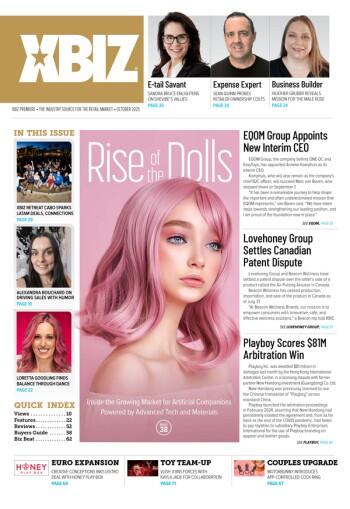According to a study published in May 2010 by the Mobile Marketing Association (MMA) and LuthResearch.com, which monitored the behaviors and opinions of U.S. adult consumers with regard to mobile marketing, approximately 1 in 5 adult Americans that own mobile phones are now using their phones to conduct mobile commerce.
M-commerce, as it is now being called by industry professionals, has evolved and is now being defined as a one or two way exchange of values, as facilitated by a mobile e-device such as a mobile phone, via wireless communication networks and technologies. As an industry standard, this brand new definition helps to better shape and define the scope of m-commerce and the services rendered via mobile devices. Using a terminology consistent within the industry is an important first step toward building a solid baseline for m-commerce within the United States.
The May 2010 results came from a survey which included over 1,000 American adults, and was conducted in mid-April. The consumers were asked questions regarding their mobile device usage and experiences with m-commerce such as how they paid for their transactions; which mobile media services were used to conduct their transactions; the types of transactions made in the most recent 30-day period; the quality of their experience with m-commerce as well as their interest in conducting future transactions in the following 12-month period.
The results of the survey revealed that nearly 17% of respondents used their mobile phones to make purchases for virtual products, such as ring tones, applications and other mobile Web-based products. 6% of respondents stated that they received discounts and/or coupons via their mobile devices, while another 6% used their mobile phones to purchase actual physical goods. It is this last 6% of respondents that is the most telling of the penetration of m-commerce into the American market, with consumers purchasing more than just digital content via these mobile devices.
Other data collected during the study revealed that smartphone users were more likely to make m-commerce purchases than people who owned other types of phones, with over 50% of iPhone owners and 34% of Blackberry users purchasing content for their smartphones via mobile services. Interestingly enough, over 50% of purchases made via mobile devices were made directly through a mobile phone service carrier, and over 40% were paid for using a credit or bank card.
The largest demographic of m-commerce consumers over every other age group surveyed was of adults between the ages of 25 and 34, with respondents from all categories and age groups stating that they considered their purchases made via their mobile devices to be “trustworthy and secure.” The results of this survey are huge for the mobile, e-commerce or m-commerce, industry, revealing that mobile consumers are ready to branch out and make purchases in other areas beyond virtual or application/content sales. This shows that not only is m-commerce reaching more consumers than ever before, but that the quality of the mobile consumer experience and the confidence within the industry is growing as well.
Due to these increases it can be expected that the capacity and features offered via mobile phones and other mobile devices will improve and increase as well, allowing consumers to easily purchase content and products via m-commerce channels. This makes for a real opportunity for marketers to take advantage of this growing interest through the offering of mobile-only deals, coupons, discounts and other means of engaging target consumers via these devices.
For those with mobile traffic, Webbilling.com now offers iphone and non-smart phone join pages for their EU Direct Debit non-card payment solution for Germany, Austria, United Kingdom, Netherlands and Spain. If you are monetizing your mobile traffic add this billing method for improved revenue. If you have mobile traffic and are not monetizing it or want help developing your mobile content and a mobile strategy, write me at Marketing@Webbilling.com.
One in Five Americans Using Mobile E-Commerce
Copyright © 2025 Adnet Media. All Rights Reserved. XBIZ is a trademark of Adnet Media.
Reproduction in whole or in part in any form or medium without express written permission is prohibited.
More Articles
Tips for Staying Sexually Healthy as a Livestreamer
In addition to the absolute essentials — like regular STI testing, bodily cleanliness, consent discussions and maintaining intentional boundaries — content creators who work as livestreamers must attend to a unique set of concerns.
Multipurpose Products Take Center Stage as Pleasure Brands Face Headwinds in Europe
As 2025 unfolds, the European pleasure industry finds itself balancing between resilience and recalibration. After riding high on customer demand during the pandemic, the sector is now adjusting to more cautious customer behavior, global geopolitical tensions and shifting retail strategies.
Balancing Content Creation With Real-Life Desire
Let’s be real for a moment: Nobody actually wakes up turned on, camera-ready and full of fantasy, then stays that way 24/7. For most people, that’s not a problem — but when your livelihood depends on creating clips, livestreaming or running fan pages, a mismatch between libido and schedule can feel like a personal and professional crisis.
Cami Strella on Crafting Persona, Claiming Power
With her long, silky black hair, dark eyes and warm olive skin, Cami Strella looks like she might have stepped out of an Isabele Allende novel. But while she may be in the business of fantasy — as are all adult performers and creators, to one degree or another — the thriving indie brand Strella has been building, one strategic move at a time, is very real indeed.
WIA Profile: Sara Gaffoor
Though it may seem surprising to outsiders, industry veterans are well acquainted with the self-esteem, personal growth and rewarding career achievements that can come with a job in the sex toy space.
Zhe Founder Karyn Elizabeth Creates Gender-Affirming Lingerie Fashion
For years, the mainstream lingerie market has been shaped by narrow beauty standards and cisnormativity, with little room for gender diversity. Most lingerie is designed to fit cisgender female bodies, while trans people are often forced to go DIY with uncomfortable solutions like pantyhose, duct tape and ill-fitting shapewear.
Breaking Down HB 805 and How it Affects the Adult Industry
North Carolina House Bill 805 was enacted July 29, after the state legislature overrode Governor Josh Stein’s veto. The provisions that relate to the adult industry, imposing requirements for age verification, consent and content removal, are scheduled to become effective Dec. 1. Platforms have until then to update their policies and systems to comply with the new regulations.
Staying Compliant With Payment Standards Across Europe and Australia
So, you’ve got your eye on international growth. Smart move. No matter where adult-industry merchants operate, however, one requirement remains consistent: regulatory compliance. This isn’t just a legal checkbox — it’s a critical component of keeping payments flowing and business operations intact.
Neon Coyotes Sets the Tone for Trendiness With Bespoke Leather Kink Wear
If your kink wear can’t readily make the leap from a dark BDSM dungeon to a sunny, mimosa-fueled brunch, you haven’t yet been initiated into the cult of the Neon Coyotes — fresh, leather kink wear brand transforming restraints into runway-ready art.
Why It's Time for Adult Retail to Embrace AI
In the late 1980s, I was working in the rental car business. My first company didn’t have a single computer. Everything — contracts, inventory, employee records — was done by hand. If you wanted a report, you dug through paper files and crunched numbers on a calculator. It was tedious, but it was all we knew.









